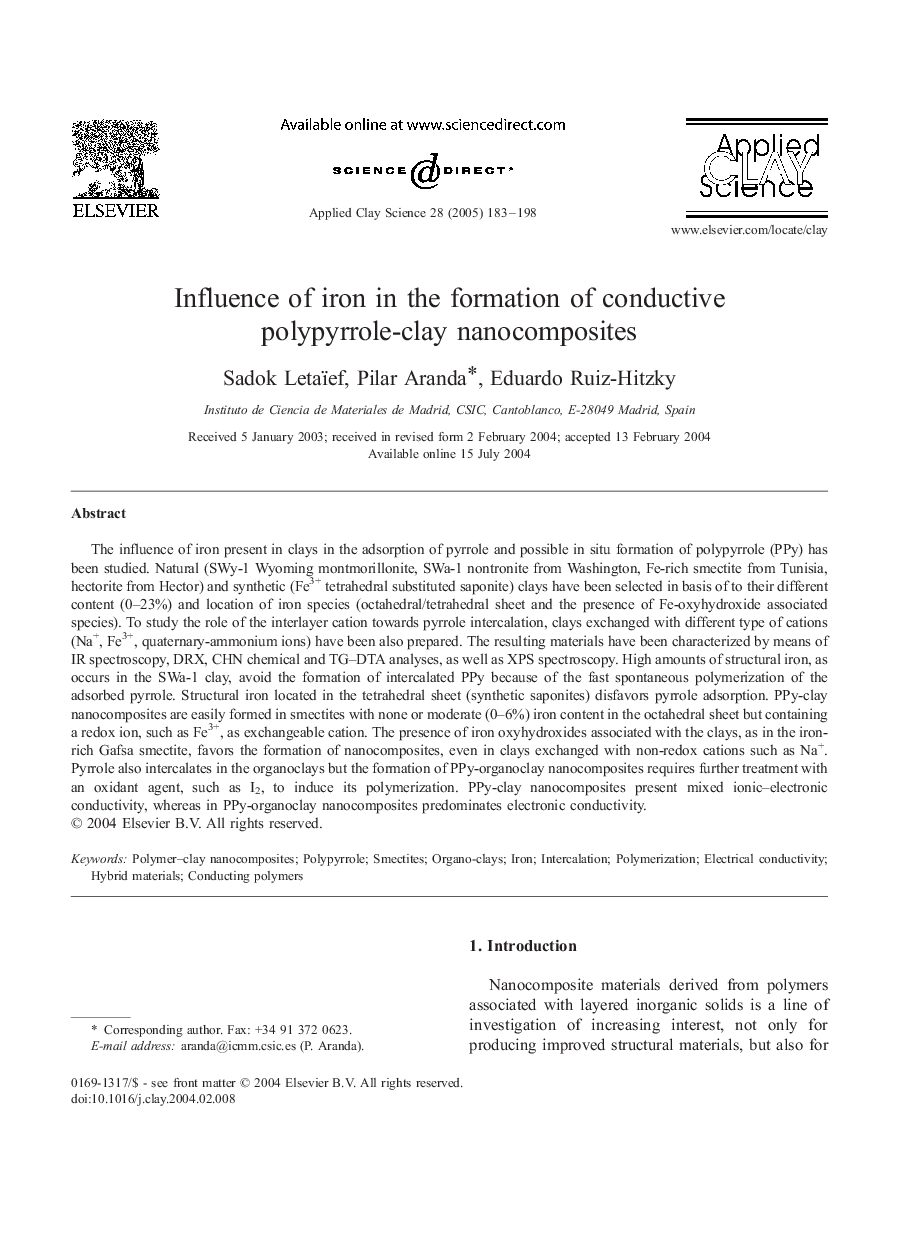| کد مقاله | کد نشریه | سال انتشار | مقاله انگلیسی | نسخه تمام متن |
|---|---|---|---|---|
| 9822548 | 1519146 | 2005 | 16 صفحه PDF | دانلود رایگان |
عنوان انگلیسی مقاله ISI
Influence of iron in the formation of conductive polypyrrole-clay nanocomposites
دانلود مقاله + سفارش ترجمه
دانلود مقاله ISI انگلیسی
رایگان برای ایرانیان
کلمات کلیدی
موضوعات مرتبط
مهندسی و علوم پایه
علوم زمین و سیارات
ژئوشیمی و پترولوژی
پیش نمایش صفحه اول مقاله

چکیده انگلیسی
The influence of iron present in clays in the adsorption of pyrrole and possible in situ formation of polypyrrole (PPy) has been studied. Natural (SWy-1 Wyoming montmorillonite, SWa-1 nontronite from Washington, Fe-rich smectite from Tunisia, hectorite from Hector) and synthetic (Fe3+ tetrahedral substituted saponite) clays have been selected in basis of to their different content (0-23%) and location of iron species (octahedral/tetrahedral sheet and the presence of Fe-oxyhydroxide associated species). To study the role of the interlayer cation towards pyrrole intercalation, clays exchanged with different type of cations (Na+, Fe3+, quaternary-ammonium ions) have been also prepared. The resulting materials have been characterized by means of IR spectroscopy, DRX, CHN chemical and TG-DTA analyses, as well as XPS spectroscopy. High amounts of structural iron, as occurs in the SWa-1 clay, avoid the formation of intercalated PPy because of the fast spontaneous polymerization of the adsorbed pyrrole. Structural iron located in the tetrahedral sheet (synthetic saponites) disfavors pyrrole adsorption. PPy-clay nanocomposites are easily formed in smectites with none or moderate (0-6%) iron content in the octahedral sheet but containing a redox ion, such as Fe3+, as exchangeable cation. The presence of iron oxyhydroxides associated with the clays, as in the iron-rich Gafsa smectite, favors the formation of nanocomposites, even in clays exchanged with non-redox cations such as Na+. Pyrrole also intercalates in the organoclays but the formation of PPy-organoclay nanocomposites requires further treatment with an oxidant agent, such as I2, to induce its polymerization. PPy-clay nanocomposites present mixed ionic-electronic conductivity, whereas in PPy-organoclay nanocomposites predominates electronic conductivity.
ناشر
Database: Elsevier - ScienceDirect (ساینس دایرکت)
Journal: Applied Clay Science - Volume 28, Issues 1â4, January 2005, Pages 183-198
Journal: Applied Clay Science - Volume 28, Issues 1â4, January 2005, Pages 183-198
نویسندگان
Sadok Letaïef, Pilar Aranda, Eduardo Ruiz-Hitzky,